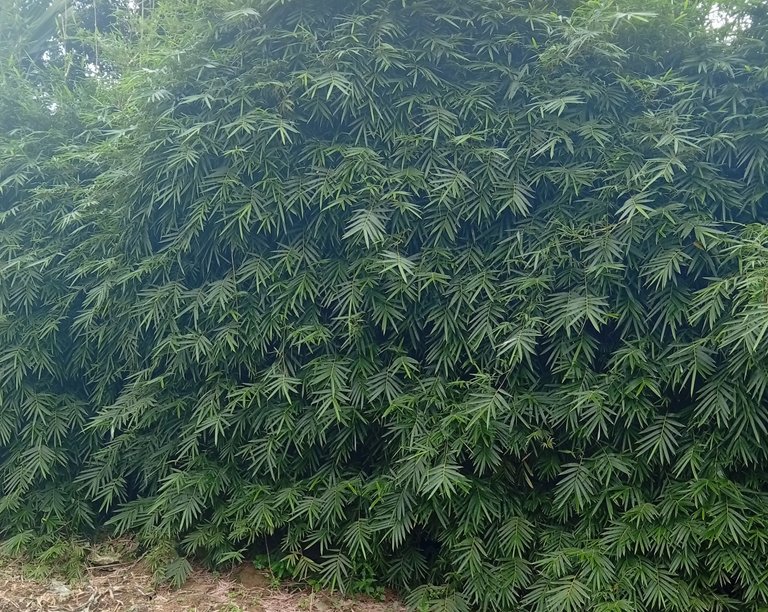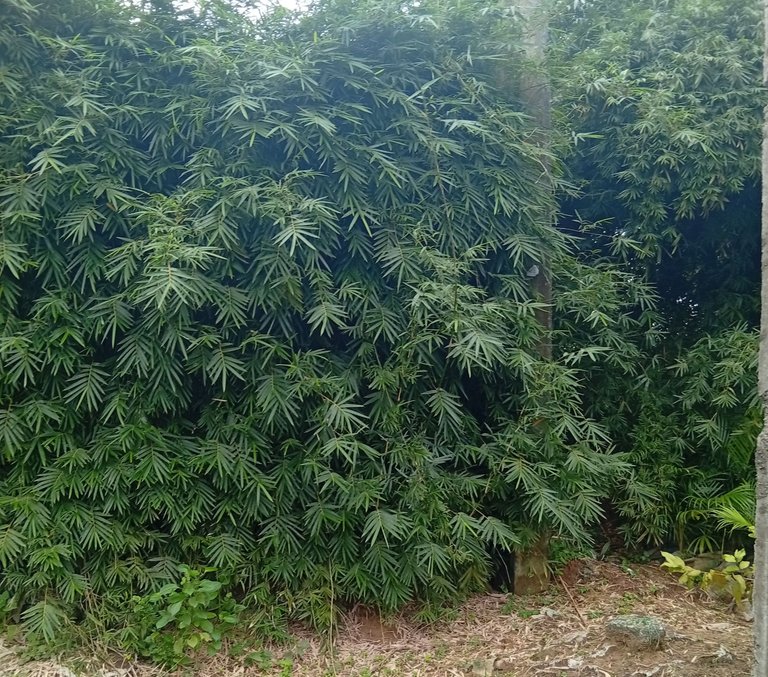"Bambusa textilis: Nature’s Gift to Textile and Craft".




Bambusa textilis, commonly known as Weaver's Bamboo, is a species of clumping bamboo in the grass family (Poaceae), native to southern China.
Key Features:
Botanical name: Bambusa textilis
Common name: Weaver's Bamboo
Family: Poaceae (Grass family)
Growth type: Clumping bamboo (non-invasive)
Height: Can reach 10–20 meters (33–66 feet)
Culms (stems): Upright, straight, and slender with a bluish-grey powdery coating when young
Diameter: Up to 5 cm (2 inches)
Leaf shape: Narrow and lance-shaped
Uses:
Traditionally used in weaving, hence the name “Weaver’s Bamboo”
Excellent for privacy screens, windbreaks, and ornamental purposes
Also used in construction, crafts, and furniture making
Growing Conditions:
Prefers well-drained soils
Thrives in warm, subtropical to tropical climates
Tolerates light frost but not prolonged freezing
The species is indigenous to Vietnam and China (Anhui, Guangdong, and Guangxi), where it primarily grows at low elevations along the banks of streams.
The specific name is the Latin substantive "textilis, e" = tissue, in reference to the thin and resilient fibres that may be obtained from the stems. The genus's name is derived from the local Malay name "bambu.".
Common names include: qing pi zhu, shan qing zhu, zhu uang, wong chuk (Chinese); bambou des tisserands (French); seihi chiku (Japanese); elegant textile bamboo, royal bamboo, silk bamboo, slender weavers bamboo, weaver's bamboo, and wong chuk bamboo (English).
The evergreen rhizomatous perennial species, Bambusa textilis McClure (1940), forms compact tufts with erect stems (culms), which are slightly curved at the apex. The tufts are 6–15 m long, 2.5–5 cm in diameter, green, and initially covered in a white-bluish Purina.
With walls that are 0.2 to 2.5 cm thick and hollow between the nodes, the culms are initially shielded by deciduous cancellation bracts that are covered in bristly brown hairs. They are 40 to 70 cm apart.
Ramifications are grouped at the nodes, with the exception of the lower portion, which is about ¼ of the length. It has 8–12 alternating leaves, which are linear-lanceolate with rough margins and a long, pointed apex. It is 7–18 cm long and 1-2 cm wide, hairless above and pubescent below.
3-4.5 cm long, initially purple, then bronze, panicle inflorescences with spikelets clustered at the nodes.
It reproduces by seed, but more often by division and stem cutting, using one section with two to three nodes, and planting it vertically or obliquely into a sandy substrate that is rich in organic matter and kept humid at 24-26 °C.
With its many varieties, the most well-known of which is "Gracilis," fast-growing bamboo is one of the genus' most beautiful and ornamental plants. It can be grown in tropical, subtropical, and temperate climates and can withstand temperatures as low as -8 °C without suffering any harm.
Picture : Photography
Category : flower
Camera use : handphone
Model : Redmi14C
Photographer : @ubglo17
Location : Uyo,Akwa Ibom State,Nigeria
Link to original : Community